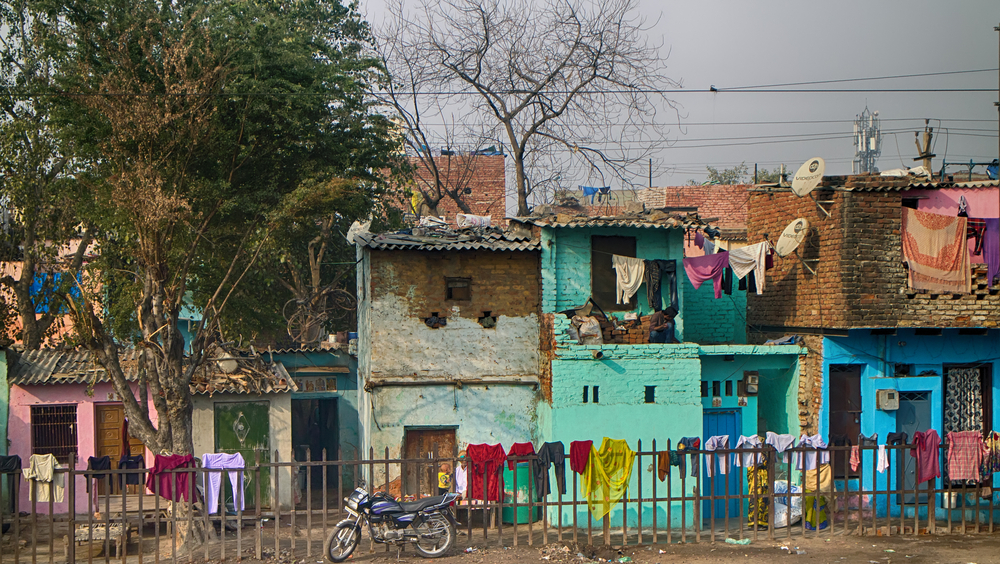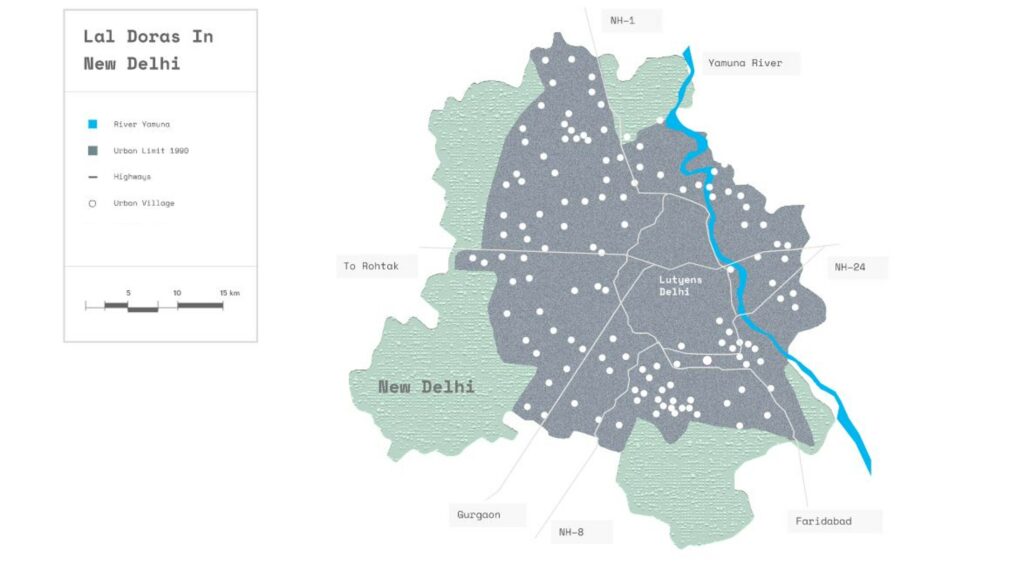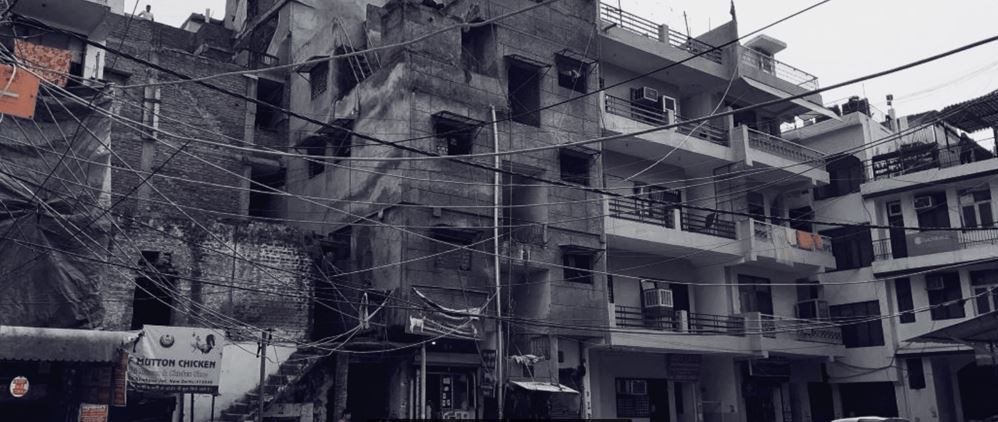Concept of Lal Dora
The concept of Lal Dora, or Red Tape Property, was first introduced in India in 1908. This term was used to refer to the agricultural land that was separated from nearby villages by a red line on the maps. The purpose of this separation was to ensure that the agricultural land would remain undisturbed and be used solely for farming purposes. After India gained independence, the Government of India extended privileges related to Lal Dora lands, making them exempt from construction norms and building bye-laws as per the provisions of the Municipal Act. This land is marked by the revenue department to distinguish it from agricultural land and serves as an extension of the village habitation where villagers keep their livestock and support system.
As population growth in villages increased over time, a new peripheral term known as ‘Phirni’ also came into use. This term is used to refer to areas outside of Lal Dora lands that are not subject to any restrictions on construction or development. These lands still remain an important part of Indian culture and are often seen as spaces where traditional farming practices can continue uninterrupted.
Lal dora areas in Delhi
Lal Dora land is an important part of Delhi’s landscape and has seen a lot of development in recent years. It is a non-agricultural land that is used for residential purposes. Areas inside Lal Dora boundary are now called Urban Villages, which have an intriguing in-between nature and are facing difficulties accessing credit facilities. These properties come at low rates, making them affordable homes in prime areas of the city. With exclusion from laws under the Delhi Municipal Act, there is no obligation to get the building plan approved for development. Unfortunately, exemptions from building regulations led people in these villages to construct houses and buildings so haphazardly that much of them are unsafe, with narrow lanes, overhanging electrical wires, stagnant sewage, irregular water supply and limited garbage collection.
In 1957, the Delhi Municipal Corporation declared 135 villages located within or near Delhi as urban villages according to the Lal Dora classification. These 135 villages are considered urban to this day. Rapid urbanization has had a significant impact on traditional practices and heritage, as old buildings and neighbourhoods are being replaced by modern developments. The villages are not considered planned urban areas nor are they classified as rural due to their lack of traditional rural qualities. To address this issue, the Delhi government launched a scheme in 1979 to improve civic services in urban villages.
Figure: Urban Villages in Delhi
Source: Crossing the Lal Dora, 2017
In 2006, the Union Ministry of Urban Development established a Committee of Experts to evaluate the application of building regulations and development control norms in Lal Dora and Extended Lal Dora areas, as well as their integration into the comprehensive process of Delhi’s planned development according to Delhi Master Plan 2021. Further, in September 2021, the NCR planning board proposed that the Delhi Land Reforms Act, 1954 be repealed and villages in the city falling in Lal Dora land be brought under the ambit of the Delhi Development Authority (DDA). This would mean that private agricultural land can only be used for agricultural or related purposes. Of the 358 villages in Delhi, only 49 are subject to this Act as 174 have been declared as urban villages and 135 as urbanized villages.
What are the challenges?
Lal dora areas have been reduced to overcrowded and unhealthy pockets with a lack of essential city services like water, sewage, and waste management. The first two Master Plans of Delhi (1962 and 2001) had no mention of the villages. Master Plan of Delhi 2021 laid down special regulations for these villages but remained exempt from sealing. Plots over 1,500 square feet area in the area have been taken under Delhi’s Master Plan for re-development as multi-story residences. However, the desired improvements especially with regard to civic services have not been seen and the Delhi Master Plan for 2021 noted that the redevelopment of these settlements was a critical focus area but failed to provide a separate legal framework.
Successive governments in Delhi have attempted to regularise or create development plans for these villages, but none of these plans could be implemented due to their complexity. People in Delhi’s lal dora villages are divided over whether or not they want any change in the way things are. In November 2019, 79 more lal dora villages were declared as urban villages, but as per sources, the residents of these villages have little hope due to past government attempts failing.
The Delhi Master Plans overlooked urban villages during the formal planning process, operating under the assumption that their proximity to urban areas would naturally contribute to their eventual urbanization. There is a general lack of interest in the urban villages of the state, creating major barriers to development and advancement for both villagers and the villages. In these villages, there is ambiguity around land rights, the provision of services, and the scope of the land pooling policy for the inhabitants. The added complexity of this situation makes it hard for the residents to keep up with the changing urban landscape.
The Delhi government’s failure to coordinate between its different wings has resulted in unsurfaced progress in the proposals to formalize construction in Lal Dora villages. According to one of the 2006 expert committees of Lal Dora and Extended Lal Dora areas, the planning and on-ground operations lack coordination. Another states that urban villages have had a long and complex history, with conflicting landholdings and fractured juridictions, thereby complicating the exercise of regulating these areas.
The DDA is now drafting new laws for the management of urban villages which will be included in the next Master Plan 2041. Some experts suggested customized norms with the involvement of the community to preserve the cultural and historical value of these settlements. This could be an effective way to protect traditional practices and heritage while allowing for modern development.




